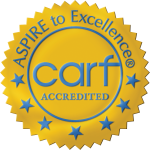
Why do people emphasize the importance of structure in addiction recovery programs? Is structure the end goal or just a way of getting to sobriety? These are commonly asked questions, especially when one is looking at the pros and cons of different treatment programs. Questioning structure is also a common response that people may have when they first enter a rehab program or recovery environment. A person like that might ask, “Why do I have to attend all these group meetings?” or, “How come we do this activity at the same time every day?” Discussing the role of structure in addiction recovery means looking at the root of what addiction is and how to best stay on a sober path.
Structure in addiction recovery treats addiction behaviors
When people have been suffering from an addiction to alcohol or drugs, they have developed behaviors and ways of thinking about things that both enable their addiction and discourage healthier habits. Many who seek treatment do so because their lives have become too difficult, unmanageable, and chaotic as a result of addictive behavior. While some might see this as a result of selfish behavior, or of refusing to consider consequences, that’s not quite right. Actually addiction has observable effects on a person’s brain structure that causes long-lasting changes in behavior and thought. What some people view as a choice to act selfishly or recklessly is more accurately a brain disease caused by the choice to use mind-altering substances.
Addiction has effects on a person’s behavior and thinking that ripple out into every part of their life, from family and relationships, to education and work, and other kinds of social activity. To put it in simple terms, addiction can make it hard to prioritize and follow through on anything other than getting and using addictive substances. As a result, addiction chips away at the social bonds, habits, and lifestyle a person has built up over their lifetime. It creates new habits and compulsions that feel stronger than old ones. That’s essentially how life under addiction becomes disordered, unstructured, messy, etc.
Structure in addiction recovery programs aims to put a person on a path back to healthier habits, in turn promoting healthier thoughts and actions. An inpatient/residential addiction treatment program might use structure to promote recovery in the following ways:
- Structured group discussions to promote healthy communication and clear self-reflection
- Structured learning (with classes and assignments) to promote focused thought and an understanding of addiction and our brains
- Structured living (set wake-up and bed times, chores, meal planning) to start learning productive routines and set a good precedent for long-term recovery
- Structured therapy to encourage clarity of self-reflection, thinking about personal history, choices, and future goals
Structure in addiction recovery helps with stress and anxiety
A highly structured addiction recovery program has the added benefit of helping those with co-occurring mental health disorders or heightened stress and anxiety, to have a safe space in which to process their feelings and sensations. Many who have been struggling with drug dependency have been exposed to a lot of uncertainty, and even dangerously risky situations. A structured and safe recovery program can remove some pressures from the outside world and allow the person in treatment to feel sufficiently at ease to start the serious work of self-reflection.
Structure in addiction recovery promotes long-term sobriety
Remember, addiction often causes long-lasting changes in the brain that affect thinking habits, behavior, attitudes, and desires. It’s not easy to simply change these adapted patterns. To stay in recovery, someone who has completed an addiction treatment program must incorporate what they learned into a long-term lifestyle. The difficulty of changing behavioral patterns that have been locked into the brain by addiction also explains why some people go through multiple recovery programs before they find their sobriety really “sticking.”
Ultimately, the goal of a rehab program is to empower the individual to put the healthy structures they learned in rehab into effect in their own lives. You foster a strong sense of recovery by consciously practicing good recovery habits. The person in active recovery learns the difference between practicing healthy habits and unconsciously falling into unhealthy habits. By becoming more purposeful and less compulsive or impulse driven, a person in recovery will also be more aware of factors that might put them in danger of relapse. Relapse is not a single event but a process, and being conscious of relapse dangers allows people to prevent bad outcomes.
Finally, there is less of a chance of returning to active addiction if one can maintain a feeling of stability, purpose, and gratification in their day-to-day life. Maintaining the structured ways of living learned through addiction recovery programs and a long-term sober lifestyle means one will feel less pressure to find relief in drugs or alcohol or other addictive activities.
Are you or your loved one struggling to make sense of a dependency on drugs or alcohol? Stepworks can help. Just submit the form below to get in touch with a team member.
Stepworks General Contact Form
Basic contact form for Stepworks Recovery Centers.




